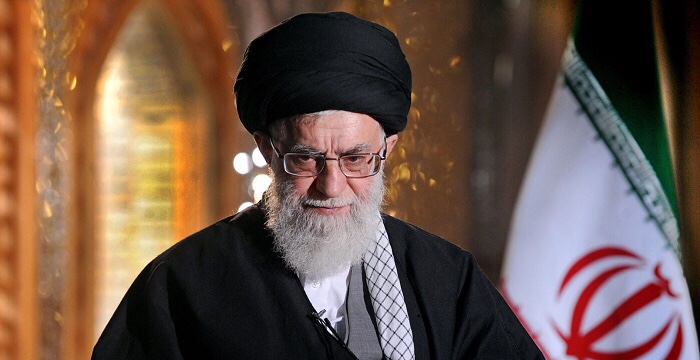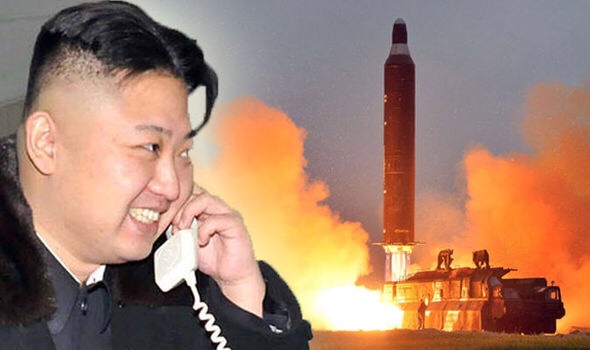 The Doomsday Clock just moved: It’s now 2 minutes to ‘midnight,’ the symbolic hour of the apocalypse
The Doomsday Clock just moved: It’s now 2 minutes to ‘midnight,’ the symbolic hour of the apocalypse
Alexa, what time is the apocalypse?
Ulp.
The Bulletin of the Atomic Scientists advanced the symbolic Doomsday Clock a notch closer to the end of humanity Thursday, moving it ahead by 30 seconds after what the organization called a “grim assessment” of the state of geopolitical affairs.
“As of today,” Bulletin president Rachel Bronson told reporters, “it is two minutes to midnight.”
In moving the clock 30 seconds closer to the hour of the apocalypse, the group cited “the failure of President Trump and other world leaders to deal with looming threats of nuclear war and climate change.”
The organization — whose board includes 15 Nobel Laureates — now believes “the world is not only more dangerous now than it was a year ago; it is as threatening as it has been since World War II,” Bulletin officials Lawrence M. Krauss and Robert Rosner wrote in an op-ed published Thursday by The Washington Post. “In fact, the Doomsday Clock is as close to midnight today as it was in 1953, when Cold War fears perhaps reached their highest levels.”
Krauss, a theoretical physicist, and Rosner, an astrophysicist, added: “To call the world nuclear situation dire is to understate the danger — and its immediacy. North Korea’s nuclear weapons program appeared to make remarkable progress in 2017, increasing risks for itself, other countries in the region and the United States.”
The clock, a metaphorical measure of humankind’s proximity to global catastrophe, also advanced 30 seconds last year, to 2½ minutes to “midnight” — the closest to the apocalyptic hour it has been since 1953, after the United States tested its first thermonuclear device, followed months later by the Soviet Union’s hydrogen bomb test.
person. But when that person is the new president of the United States, his words matter.”
[Nervous about nukes again? Here’s what you need to know about The Button. (There is no button.)]
Before Thursday’s announcement, experts said there was only one direction the clock could possibly move, given recent events — including North Korea’s intercontinental ballistic missile test and the my-nuclear-button-is-bigger-than-yours war of words between Trump and North Korean leader Kim Jong Un.
“I think it would be very hard for the clock not to move forward,” Alex Wellerstein, who specializes in the history of nuclear weapons at the Stevens Institute of Technology, said in an email leading up to the announcement. “We have members of Congress, White House advisers, and even the president implying that they think war with a nuclear state is not only likely, but potentially desirable. That’s unusual and disturbing.
“The question I have is: How much forward can they go?”
Another 30 seconds, to be exact.
The clock is symbolic, sitting at the intersection of art and science, and it has wavered between two and 17 minutes until doom since its inception in 1947.
A board of scientists and nuclear experts meets regularly to determine what time it is on the Doomsday Clock. This group, called the Bulletin of the Atomic Scientists, was founded by veterans of the Manhattan Project concerned about the consequences of their nuclear research. One of them, nuclear physicist Alexander Langsdorf, was married to artist Martyl Langsdorf, who created the clock and set it at seven minutes to midnight, or 11:53, for the cover of the group’s magazine. Her husband moved the time four minutes ahead in 1949.
Since then, the bulletin’s board has determined when the clock’s minute hand will move, usually to draw attention to worldwide crises that, the board believes, threaten the survival of the human species. The group’s reasoning focuses almost exclusively on the availability of nuclear weapons and a willingness among the world’s great powers to use them.
“Whenever the clock is set, we answer two basic questions,” Rachel Bronson, president of the Bulletin, said in an interview last fall. “Is the world safer, or at greater risk than it was a year ago? And is it safer or at greater risk than it was ever in the clock’s history?”
This 1960s nuclear fallout shelter is a time capsule to the past — and offers lessons for the Trump era
(Video: Erin Patrick O’Connor, Daron Taylor, Monica Hesse, Thomas LeGro/Photo: Daron Taylor/The Washington Post)
The group’s reasoning has traditionally focused on the availability of nuclear weapons and a willingness among the world’s great powers to use them. But in recent years, the scientists have also considered the threat posed by climate change, which they said in 2007 is “nearly as dire” as the dangers of nuclear weapons.
In advancing the famed clock last year, the group noted that “the global security landscape darkened as the international community failed to come effectively to grips with humanity’s most pressing existential threats, nuclear weapons and climate change.”
But the organization also cited the election of Trump — “who has promised to impede progress on both of those fronts,” Krauss and retired Navy Rear Adm. David Titley wrote in an op-ed last year. “Never before has the Bulletin decided to advance the clock largely because of the statements of a single person. But when that person is the new president of the United States, his words matter.”
[North Korea has shown us its new missile, and it’s scarier than we thought]
Daryl Kimball, executive director of the nonprofit Arms Control Association, said a symbolic move toward “midnight” makes sense — and that nuclear risks alone justified it.
“Over the year, there has been increased tensions with North Korea, nuclear threats conveyed by President Trump and Kim Jong Un, tensions with Russia are higher — perhaps as difficult as they have been since the end of the Cold War,” he said Wednesday. Within days, Kimball noted, the Trump administration is set to announce a nuclear strategy that calls for expanding the role of U.S. nuclear weapons. “So the risk of a nuclear conflict by accident or by design is unfortunately growing higher,” he added.
In a September speech at the United Nations, Trump threatened to “totally destroy North Korea” to defend the United States or its allies, and referred to Kim by the new nickname he had just given the dictator on Twitter, saying: “Rocket Man is on a suicide mission for himself.”

Donald J. Trump
✔
@realDonaldTrump
I spoke with President Moon of South Korea last night. Asked him how Rocket Man is doing. Long gas lines forming in North Korea. Too bad!
4:53 AM – Sep 17, 2017
24,602 24,602 Replies
42,847 42,847 Retweets
145,427 145,427 likes
Twitter Ads info and privacy

Donald J. Trump
✔
@realDonaldTrump
Just heard Foreign Minister of North Korea speak at U.N. If he echoes thoughts of Little Rocket Man, they won’t be around much longer!
8:08 PM – Sep 23, 2017
49,175 49,175 Replies
36,627 36,627 Retweets
132,940 132,940 likes
Twitter Ads info and privacy
Kim responded with an arcane insult, declaring in an unusually direct and angry statement published by North Korea’s official Korean Central News Agency: “I will surely and definitely tame the mentally deranged U.S. dotard with fire.” (Oxford defines dotard as “an old person, especially one who has become weak or senile.”)
Two months later, North Korea tested a new kind of intercontinental ballistic missile, which it called the Hwasong-15 and said could carry a “super large heavy warhead.” Following the test, Pyongyang declared that the entire U.S. mainland is within reach, and experts calculated that the missile flew 10 times higher than the International Space Station and could theoretically reach Washington, D.C.
After Kim proclaimed in his New Year’s Day address that “the whole territory of the U.S. is within the range of our nuclear strike,” Trump responded on Twitter, saying: “North Korean Leader Kim Jong Un just stated that the ‘Nuclear Button is on his desk at all times.’ Will someone from his depleted and food starved regime please inform him that I too have a Nuclear Button, but it is a much bigger & more powerful one than his, and my Button works!”
The remarks were regarded by North Korea’s state news agency as “just a spasm of a lunatic frightened by the might of Juche Korea and a bark of a rabid dog.”
Then there was the errant alert that went out to Hawaii residents and tourists earlier this month: “BALLISTIC MISSILE THREAT INBOUND TO HAWAII. SEEK IMMEDIATE SHELTER. THIS IS NOT A DRILL.”
It all prompted an op-ed last month from Bulletin contributor Jeffrey Lewis: “This is how nuclear war with North Korea would unfold.”
What to do in case of a nuclear attack
After Hawaii’s false alarm of a nuclear attack from North Korea, were you left wondering what you should do when a nuclear bomb is dropped? You’re not alone. (Daron Taylor/The Washington Post)
As The Post’s Emily Guskin reported, a recent Washington Post-ABC News poll revealed that 38 percent of Americans surveyed said they trust Trump to responsibly handle his authority to order nuclear strikes — and 60 percent do not. Among those who are wary, nearly 9 in 10 said they are very or somewhat concerned he might launch an attack.
Last fall, Bronson called the current nuclear situation “precarious.”
“It’s easy to imagine misconceptions and accidents quickly ratcheting up an escalation ladder that spirals out of control,” she said.
The outlook for the environment isn’t much better, Bronson noted. Last year was among the warmest on record, and one in which the effects of climate change were keenly felt: Hurricanes lashed Texas, Florida and the Caribbean and wildfires scorched the American west, southern Europe, Chile, Siberia, even Greenland. In Bangladesh, floods killed more than 100 people and displaced thousands.
Meanwhile, Trump announced his intention to withdraw the United States from the Paris Climate Accord.
Despite the new time on the Doomsday Clock, Kimball urged people to remember that it is a symbol, “not an absolute measure.”
“What matters is whether it is moving farther or closer to midnight,” he said. “That’s the key.”
The Bulletin said it’s simply meant to be “an urgent warning of global danger.”
“We hope this resetting of the clock will be interpreted exactly as it is meant: an urgent warning of global danger,” the op-ed said. “The time for world leaders to address looming nuclear danger and the continuing march of climate change is long past. The time for the citizens of the world to demand such action is now. It is time to rewind the Doomsday Clock.”
Peter Holley and Amy B Wang contributed to this report, which has been updated.






